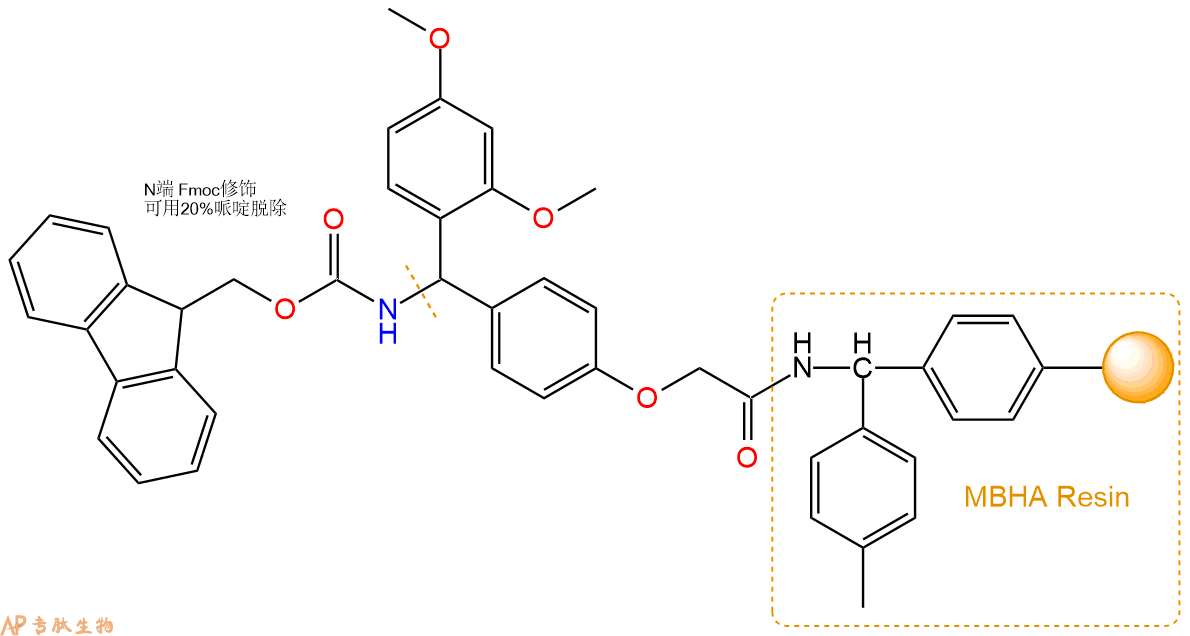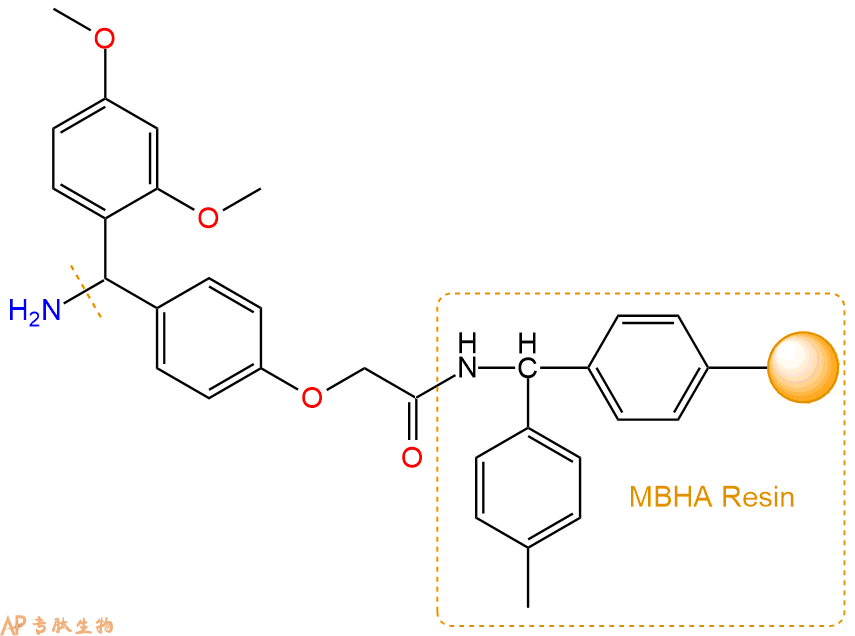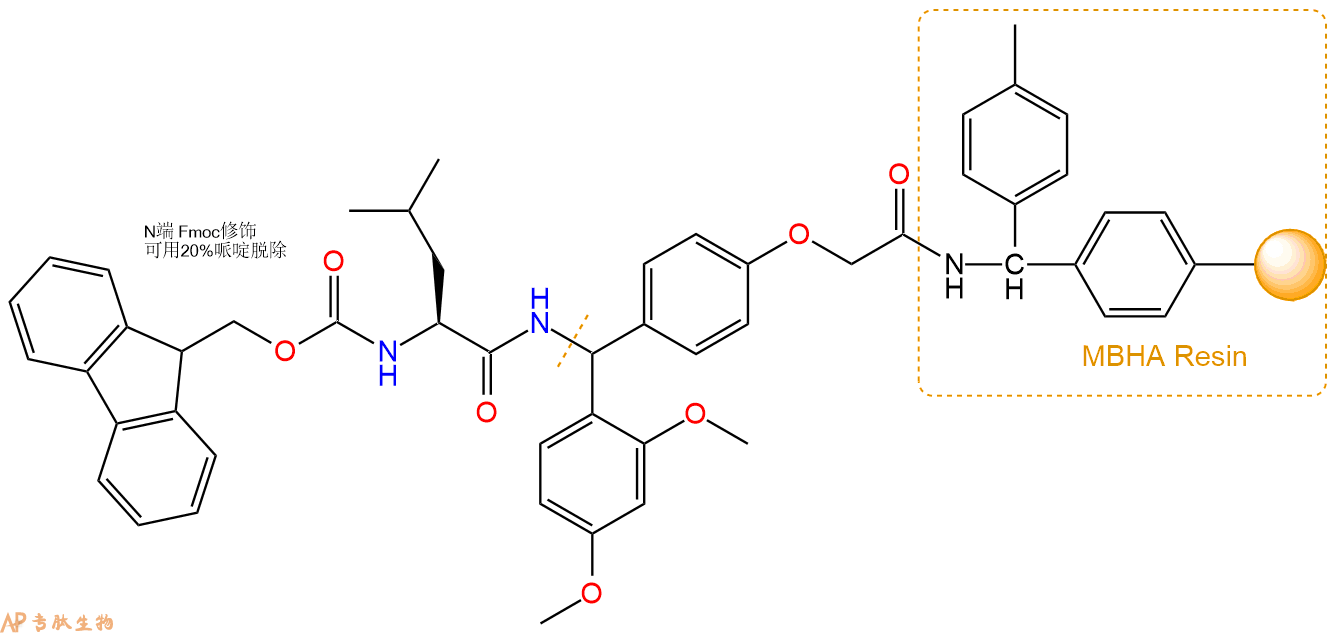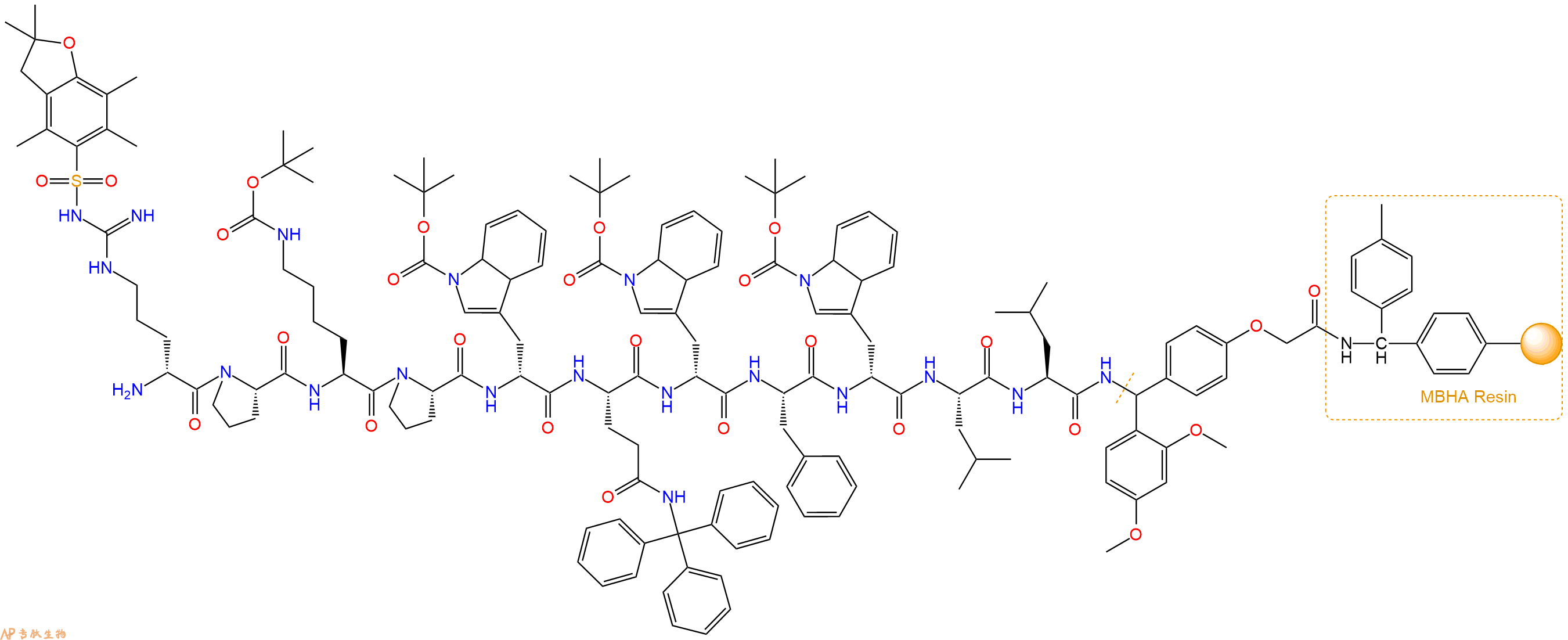400-998-5282
专注多肽 服务科研
400-998-5282
专注多肽 服务科研

这种 P 物质类似物是一种非常有效的广谱神经肽抑制剂,可用于体外小细胞肺癌 (SCLC) 细胞的生长 (IC₅₀ = 5 µM)。此外,它在体外有效抑制信号转导通路,并在体内显着延迟 SCLC 异种移植物的生长。因此,它可能对 SCLC 具有治疗价值。
编号:139994
CAS号:122481-75-8
单字母:H2N-rPKPwQwFwLL-CONH2
This substance P analog is a very potent broad-spectrum neuropeptide inhibitor for small cell lung cancer (SCLC) cell growth in vitro (IC₅₀ = 5 µM). Moreover it potently inhibited signal transduction pathways in vitro and significantly delayed the growth of an SCLC xenograft in vivo. It could therefore be of therapeutic value in SCLC.
很多蛋白在细胞中非常容易被降解,或被标记,进而被选择性地破坏。但含有部分D型氨基酸的多肽则显示了很强的抵抗蛋白酶降解能力。
| DOI | 名称 | |
|---|---|---|
| 10.1158/0008-5472.CAN-04-3197 | Broad-spectrum G protein-coupled receptor antagonist, [D-Arg1,D-Trp5,7,9,Leu11]SP: a dual inhibitor of growth and angiogenesis in pancreatic cancer | 下载 |
| 10.1074/jbc.271.46.29453 | [D-Arg1,D-Trp5,7,9,Leu11]Substance P coordinately and reversibly inhibits bombesin- and vasopressin-induced signal transduction pathways in Swiss 3T3 cells | 下载 |
多肽H2N-DArg-Pro-Lys-Pro-DTrp-Gln-DTrp-Phe-DTrp-Leu-Leu-NH2的合成步骤:
1、合成MBHA树脂:取若干克的MBHA树脂(如初始取代度为0.5mmol/g)和1倍树脂摩尔量的Fmoc-Linker-OH加入到反应器中,加入DMF,搅拌使氨基酸完全溶解。再加入树脂2倍量的DIEPA,搅拌混合均匀。再加入树脂0.95倍量的HBTU,搅拌混合均匀。反应3-4小时后,用DMF洗涤3次。用2倍树脂体积的10%乙酸酐/DMF 进行封端30分钟。然后再用DMF洗涤3次,甲醇洗涤2次,DCM洗涤2次,再用甲醇洗涤2次。真空干燥12小时以上,得到干燥的树脂{Fmoc-Linker-MHBA Resin},测定取代度。这里测得取代度为 0.3mmol/g。结构如下图:

2、脱Fmoc:取1.35g的上述树脂,用DCM或DMF溶胀20分钟。用DMF洗涤2遍。加3倍树脂体积的20%Pip/DMF溶液,鼓氮气30分钟,然后2倍树脂体积的DMF 洗涤5次。得到 H2N-Linker-MBHA Resin 。(此步骤脱除Fmoc基团,茚三酮检测为蓝色,Pip为哌啶)。结构图如下:

3、缩合:取1.22mmol Fmoc-Leu-OH 氨基酸,加入到上述树脂里,加适当DMF溶解氨基酸,再依次加入2.43mmol DIPEA,1.15mmol HBTU。反应30分钟后,取小样洗涤,茚三酮检测为无色。用2倍树脂体积的DMF 洗涤3次树脂。(洗涤树脂,去掉残留溶剂,为下一步反应做准备)。得到Fmoc-Leu-Linker-MBHA Resin。氨基酸:DIPEA:HBTU:树脂=3:6:2.85:1(摩尔比)。结构图如下:

4、依次循环步骤二、步骤三,依次得到
H2N-Leu-Linker-MBHA Resin
Fmoc-Leu-Leu-Linker-MBHA Resin
H2N-Leu-Leu-Linker-MBHA Resin
Fmoc-DTrp(Boc)-Leu-Leu-Linker-MBHA Resin
H2N-DTrp(Boc)-Leu-Leu-Linker-MBHA Resin
Fmoc-Phe-DTrp(Boc)-Leu-Leu-Linker-MBHA Resin
H2N-Phe-DTrp(Boc)-Leu-Leu-Linker-MBHA Resin
Fmoc-DTrp(Boc)-Phe-DTrp(Boc)-Leu-Leu-Linker-MBHA Resin
H2N-DTrp(Boc)-Phe-DTrp(Boc)-Leu-Leu-Linker-MBHA Resin
Fmoc-Gln(Trt)-DTrp(Boc)-Phe-DTrp(Boc)-Leu-Leu-Linker-MBHA Resin
H2N-Gln(Trt)-DTrp(Boc)-Phe-DTrp(Boc)-Leu-Leu-Linker-MBHA Resin
Fmoc-DTrp(Boc)-Gln(Trt)-DTrp(Boc)-Phe-DTrp(Boc)-Leu-Leu-Linker-MBHA Resin
H2N-DTrp(Boc)-Gln(Trt)-DTrp(Boc)-Phe-DTrp(Boc)-Leu-Leu-Linker-MBHA Resin
Fmoc-Pro-DTrp(Boc)-Gln(Trt)-DTrp(Boc)-Phe-DTrp(Boc)-Leu-Leu-Linker-MBHA Resin
H2N-Pro-DTrp(Boc)-Gln(Trt)-DTrp(Boc)-Phe-DTrp(Boc)-Leu-Leu-Linker-MBHA Resin
Fmoc-Lys(Boc)-Pro-DTrp(Boc)-Gln(Trt)-DTrp(Boc)-Phe-DTrp(Boc)-Leu-Leu-Linker-MBHA Resin
H2N-Lys(Boc)-Pro-DTrp(Boc)-Gln(Trt)-DTrp(Boc)-Phe-DTrp(Boc)-Leu-Leu-Linker-MBHA Resin
Fmoc-Pro-Lys(Boc)-Pro-DTrp(Boc)-Gln(Trt)-DTrp(Boc)-Phe-DTrp(Boc)-Leu-Leu-Linker-MBHA Resin
H2N-Pro-Lys(Boc)-Pro-DTrp(Boc)-Gln(Trt)-DTrp(Boc)-Phe-DTrp(Boc)-Leu-Leu-Linker-MBHA Resin
Fmoc-DArg(Pbf)-Pro-Lys(Boc)-Pro-DTrp(Boc)-Gln(Trt)-DTrp(Boc)-Phe-DTrp(Boc)-Leu-Leu-Linker-MBHA Resin
以上中间结构,均可在专肽生物多肽计算器-多肽结构计算器中,一键画出。
最后再经过步骤二得到 H2N-DArg(Pbf)-Pro-Lys(Boc)-Pro-DTrp(Boc)-Gln(Trt)-DTrp(Boc)-Phe-DTrp(Boc)-Leu-Leu-Linker-MBHA Resin,结构如下:

5、切割:6倍树脂体积的切割液(或每1g树脂加8ml左右的切割液),摇床摇晃 2小时,过滤掉树脂,用冰无水乙醚沉淀滤液,并用冰无水乙醚洗涤沉淀物3次,最后将沉淀物放真空干燥釜中,常温干燥24小试,得到粗品H2N-DArg-Pro-Lys-Pro-DTrp-Gln-DTrp-Phe-DTrp-Leu-Leu-NH2。结构图见产品结构图。
切割液选择:1)TFA:H2O=95%:5%
2)TFA:H2O:TIS=95%:2.5%:2.5%
3)三氟乙酸:茴香硫醚:1,2-乙二硫醇:苯酚:水=87.5%:5%:2.5%:2.5%:2.5%
(前两种适合没有容易氧化的氨基酸,例如Trp、Cys、Met。第三种适合几乎所有的序列。)
6、纯化冻干:使用液相色谱纯化,收集目标峰液体,进行冻干,获得蓬松的粉末状固体多肽。不过这时要取小样复测下纯度 是否目标纯度。
7、最后总结:
杭州专肽生物技术有限公司(ALLPEPTIDE https://www.allpeptide.com)主营定制多肽合成业务,提供各类长肽,短肽,环肽,提供各类修饰肽,如:荧光标记修饰(CY3、CY5、CY5.5、CY7、FAM、FITC、Rhodamine B、TAMRA等),功能基团修饰肽(叠氮、炔基、DBCO、DOTA、NOTA等),同位素标记肽(N15、C13),订书肽(Stapled Peptide),脂肪酸修饰肽(Pal、Myr、Ste),磷酸化修饰肽(P-Ser、P-Thr、P-Tyr),环肽(酰胺键环肽、一对或者多对二硫键环),生物素标记肽,PEG修饰肽,甲基化修饰肽等。
以上所有内容,为专肽生物原创内容,请勿发布到其他网站上。





